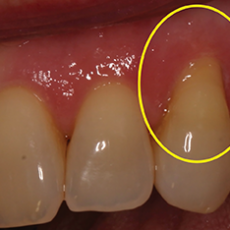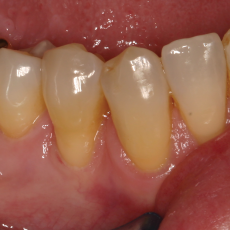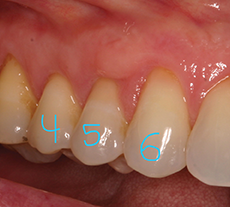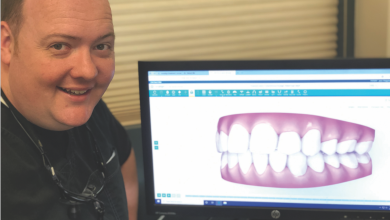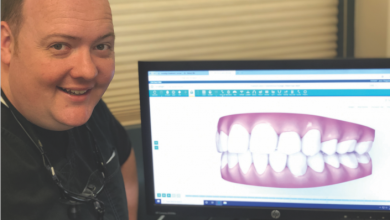Connective Tissue Grafting
So far this year we’ve seen photo essays for single and multiple tooth replacements with dental implants and how cavities are repaired with fillings. This month we’re going to focus on something that is common to many of us – gum recession.
Gum tissue recedes for a variety of reasons. The main causes are periodontal disease, cavities at the gum-line, and excessive bite forces.
Whatever the causative factor, the reason that gum tissue recedes is that there is bone loss. Bone supports the gum tissues and holds them up on the teeth. However, when bone is lost, the gums no longer have a support structure to hold them up. So, they recede.
Gum recession is commonly seen on the lip side surface of the teeth. As the gum tissue recedes, it puts the tooth at greater risk to develop a cavity on the softer root surface. Receding gum tissue can also result in a loss of the natural seal formed around each individual tooth.
“Gum grafting” is an effective and well-established method of treating gum recession problems. In this first photograph, the yellow circle highlights an area of recession and exposed root surface.
The second photo shows the grafted area highlighted. It is easy to see the root coverage that has been gained. Maintaining natural gum contours like this helps protect the tooth from cavities and help protect the supporting bone from breaking down.

These next two photos also illustrate grafting for single tooth recession defects and demonstrate the improvement in gum tissue contour and quality that can be gained by grafting.
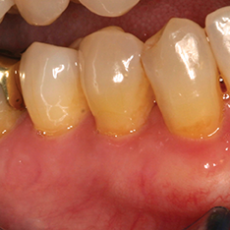
In some mouths, the recession is more generalized, putting more teeth at risk. The next photo shows multiple teeth affected by recession. The vertical blue lines illustrate the amount of recession present and the numbers are the individual tooth numbers.
The next two photographs show the results of gum grafting for this patient. One can compare with the pre-treatment photograph and recognize the significant improvement in root coverage and gum tissue quality.
Hopefully, this photo essay has increased understanding of gum recession and what can be done to treat and/or correct it. If you have questions about treating gum recession, please ask your dentist. And have a great day :^)
Today’s Dentistry
1530 Siskiyou Blvd.
Ashland, OR 97520
(541) 482-7771
Check out their website here

